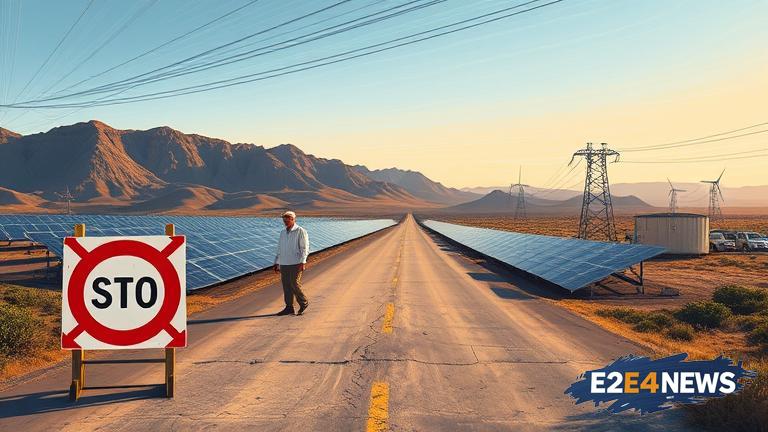California, a pioneer in renewable energy, is facing new federal hurdles that may impede the development of its wind and solar projects. The state has been at the forefront of the transition to clean energy, with a goal of achieving 100% carbon neutrality by 2045. However, recent federal regulations and policies have created uncertainty and obstacles for the industry. The new hurdles include stricter environmental reviews, increased scrutiny of project permits, and more stringent requirements for wildlife protection. These changes have raised concerns among developers, investors, and state officials, who fear that the added bureaucracy and costs may deter investment and slow the growth of the renewable energy sector. California’s wind and solar projects have been instrumental in reducing the state’s greenhouse gas emissions and promoting energy independence. The state’s renewable portfolio standard, which requires utilities to generate 60% of their electricity from renewable sources by 2030, has driven the development of numerous wind and solar farms. Nevertheless, the new federal regulations may compromise the state’s ability to meet its clean energy targets. The regulations, aimed at protecting endangered species and preserving natural habitats, have been welcomed by environmental groups but criticized by industry stakeholders. The increased costs and complexity associated with the new rules may lead to project delays, cancellations, or even lawsuits. Furthermore, the federal government’s stance on renewable energy has been inconsistent, with some policies supporting the industry while others create obstacles. The situation has sparked debates about the role of federal versus state regulation in promoting clean energy. California’s governor and state lawmakers have expressed concerns about the impact of the federal regulations on the state’s energy goals and economic development. In response, state officials are exploring alternative approaches, such as streamlining the permitting process and providing incentives for developers to invest in renewable energy projects. Despite the challenges, California remains committed to its renewable energy goals, and the state’s energy agencies are working to find solutions that balance environmental protection with the need for clean energy development. The outcome of this situation will have significant implications for the future of renewable energy in California and the United States as a whole. As the state navigates these federal hurdles, it is essential to consider the long-term consequences of the regulations on the environment, the economy, and the energy sector. Ultimately, finding a balance between environmental protection and renewable energy development will be crucial for achieving a sustainable and carbon-neutral future.
